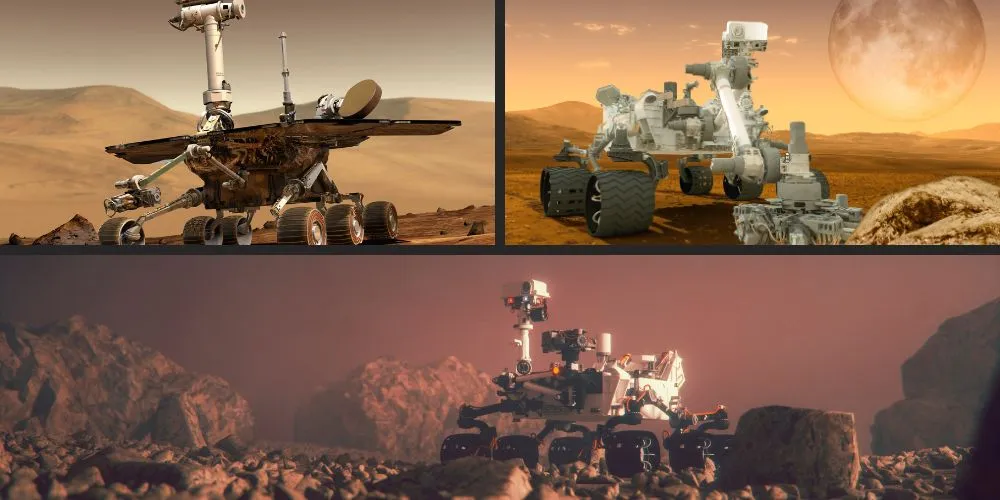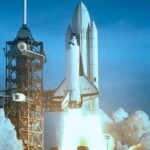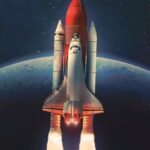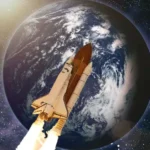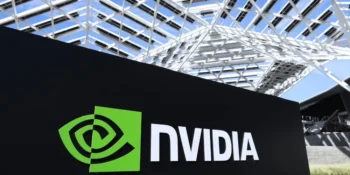Space exploration robotics represents a groundbreaking fusion of technology and exploration, enabling humanity to reach new frontiers beyond the confines of Earth. This article delves into space exploration robotics’s significance, capabilities, and advancements, showcasing how these robotic explorers revolutionize our understanding of the cosmos.
The Significance of Space Exploration Robotics
Space exploration robotics is pivotal in expanding human reach and capabilities in space. They allow us to explore distant worlds, conduct scientific research, and pave the way for future human missions. These robotic explorers serve as our eyes, ears, and hands in the cosmos, venturing into environments too harsh or hazardous for human presence and unlocking new realms of scientific discovery.
Enabling Exploration of Remote Environments
Space exploration robotics enables the exploration of remote and inaccessible environments, such as the surfaces of other planets, moons, and asteroids. Robotic spacecraft and rovers can traverse rugged terrain, navigate harsh climates, and conduct scientific investigations in environments where human presence would be impractical or impossible.
Conducting Scientific Research and Experiments
Robotic explorers serve as invaluable scientific instruments, conducting experiments, collecting data, and gathering samples to enhance our understanding of the cosmos. From analyzing the composition of Martian soil to studying the geology of lunar craters, space exploration robotics provides scientists with unprecedented insights into the origins, evolution, and diversity of celestial bodies in our solar system.
Advancing Technological Innovation
Space exploration robotics drives technological innovation and advancement, pushing the boundaries of engineering, robotics, and artificial intelligence. Robotic explorers are equipped with state-of-the-art sensors, instruments, and propulsion systems that enable autonomous navigation, remote operation, and real-time communication, paving the way for future missions to explore even more distant and challenging environments.
Capabilities of Space Exploration Robotics
Space exploration robotics encompasses diverse robotic systems and platforms designed to perform specific tasks and functions in space’s harsh and demanding conditions. From planetary rovers to spacecraft orbiters, these robotic explorers have specialized instruments and capabilities tailored to their missions and objectives.
Planetary Rovers
Planetary rovers are robotic vehicles designed to explore the surfaces of other planets and moons, conduct scientific research, and collect data about their geological, atmospheric, and environmental conditions. Rovers such as NASA’s Curiosity and Perseverance rovers on Mars and China’s Yutu on the Moon have revolutionized our understanding of these celestial bodies and paved the way for future human exploration.
Spacecraft Orbiters
Spacecraft orbiters are robotic spacecraft designed to orbit planets, moons, and asteroids, conducting remote sensing, mapping, and reconnaissance missions from orbit. Orbiters such as NASA’s Mars Reconnaissance Orbiter and ESA’s Rosetta spacecraft have provided high-resolution images, topographic maps, and scientific data that have transformed our understanding of planetary surfaces and environments.
Autonomous Probes and Landers
Autonomous probes and landers are robotic spacecraft designed to explore celestial bodies’ atmospheres, surfaces, and interiors, conducting in-situ measurements, experiments, and observations. Probes such as NASA’s Huygens probe to Titan and ESA’s Philae lander on comet 67P/Churyumov-Gerasimenko have provided valuable insights into these distant worlds’ composition, structure, and dynamics.
Advancements in Space Exploration Robotics
Advancements in space exploration robotics are driving innovation and expanding the capabilities of robotic explorers to explore new frontiers in space. From improved mobility and autonomy to enhanced sensing and manipulation capabilities, these advancements are revolutionizing our ability to explore, study, and eventually inhabit other worlds.
Enhanced Mobility and Maneuverability
Advancements in mobility and maneuverability enable robotic explorers to traverse challenging terrain, navigate complex environments, and reach previously inaccessible locations. Rovers with advanced suspension systems, articulated wheels, and multidirectional mobility capabilities can easily navigate steep slopes, rocky terrain, and sandy surfaces, enhancing their ability to explore diverse and rugged landscapes.
Autonomous Navigation and Operation
Advancements in autonomous navigation and operation enable robotic explorers to operate independently, adapt to changing conditions, and make decisions in real-time without human intervention. Robotic systems equipped with advanced algorithms, machine learning, and sensor fusion technologies can analyze their surroundings, plan optimal paths, and avoid obstacles, enabling them to explore complex and dynamic environments more efficiently and effectively.
Advanced Sensing and Instrumentation
Advancements in sensing and instrumentation enhance the capabilities of robotic explorers to collect, analyze, and transmit data about their environments. Robotic systems equipped with state-of-the-art sensors, cameras, and scientific instruments can capture high-resolution images, detect subtle changes in temperature and composition, and conduct detailed scientific measurements, providing scientists with valuable insights into the properties and dynamics of celestial bodies in space.
Conclusion
Space exploration robotics represents a transformative force in our quest to explore, understand, and ultimately inhabit the cosmos. By leveraging advanced technology, engineering, and innovation, robotic explorers are expanding human reach and capabilities in space, unlocking new realms of scientific discovery, and paving the way for future exploration and colonization of other worlds. As we continue to push the boundaries of space exploration robotics, we embark on an exciting journey of discovery and exploration that will shape the future of humanity’s presence in the cosmos.
